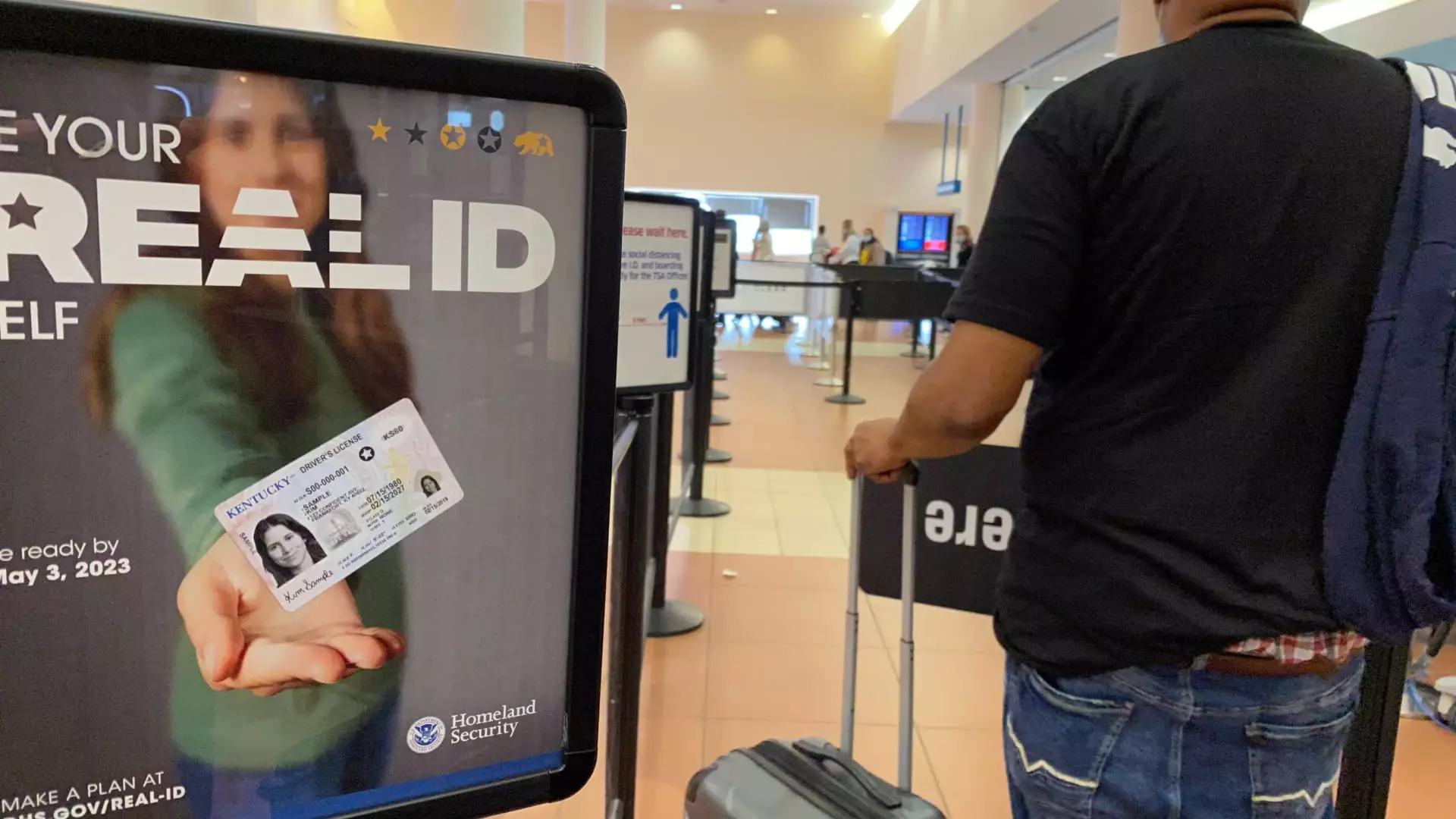As travelers prepare for their next journeys, there’s an undeniable sense of urgency in the air. May 7 marks the official enforcement date for the Real ID requirement at U.S. airports, and this impending deadline feels less like a gentle reminder and more like a looming threat to our travel plans. While proponents of the Real ID legislation tout it as a necessary measure for national security, I can’t help but question the efficacy and timing of such a widespread and potentially invasive requirement. The Pennsylvania-based Transportation Security Administration (TSA) claims that 81% of travelers at airport checkpoints already possess Real ID-compliant identification, yet that leaves a staggering percentage still unprepared for this mandate.
A Practices That Backfire
Effectively, the Real ID compliance doesn’t just represent a new layer of bureaucracy; it showcases an alarming trend of displacement of everyday travelers’ rights. The looming demand for compliant IDs has led to an uptick in appointments at motor vehicle departments, but with availability becoming scarce, it’s unfair to expect citizens to scramble for a crucial document at the last minute. John Essig, TSA’s federal security director for the New York City area, recently urged travelers to act quickly. This late-stage rush is not only a source of stress but also sets up a logistical nightmare, especially for those who may confront long lines or completely booked schedules.
Furthermore, despite years of prompts to acquire a Real ID, the deadline has been postponed multiple times. This back-and-forth has bred confusion among travelers. The government has now created an atmosphere where last-minute panic takes precedence over preparedness. Such an overhyped ultimatum cheapens the significance of greater security measures. If measures such as these are indeed necessary, shouldn’t there have been a more thoughtful phase-in process instead of a hard cutoff that appears to cater primarily to bureaucratic efficiency rather than practicality?
What Constitutes ‘Acceptable’ Identification?
To think that an opaque system of ‘acceptable identifications’ is our safeguard against terroristic threats is disheartening. The requirement to rely solely on Real ID-compliant licenses or other recognized forms of IDs such as passports may seem reasonable—but what about those individuals who can’t obtain these documents timely? The government does offer alternatives like a U.S. passport, a permanent resident card, or a trusted traveler ID, but let’s not ignore that accessibility to these alternatives is also a matter of socioeconomic privilege.
From my vantage point, this situation stands in stark contrast to the values of a society that professes inclusion and opportunity. For many, acquiring a passport is a lengthy, often burdensome process not suited to the average traveler who might have planned a spontaneous weekend getaway. The fact that people could be turned away based on their encountered circumstances shouldn’t be ignored in discussions surrounding security measures.
Innocuous Surveillance or Personal Invasion?
The Real ID initiative is ostensibly intended to bolster the identification validation process at security checkpoints, thus enhancing safety—yet the discourse around its implementation seems alarmingly draconian. Assistant TSA spokesman Carter Langston emphasized that identification verification is critical; however, it feels like we are endorsing a society where personal privacy is sacrificed on the altar of perceived safety. Are we being subjected to a culture of excessive surveillance, draped in the guise of protection?
Additionally, travelers who lack acceptable forms of identification may face extended security checks or, in the worst-case scenario, outright exclusion from their flights. This form of punitive travel could create a cascade of implications: stressed airline personnel, unhappy travelers, and missed connections. The Real ID enforcement doesn’t just inconvenience; it fundamentally transforms the landscape of air travel into one where anxiety and uncertainty predominate.
As we stand on the cusp of this new enforcement, a reality check is necessary. While security is crucial, the Real ID requirement could serve as a barrier rather than a bridge for many Americans. The panic surrounding it underscores a disparity in how we measure safety and participate in our freedoms. As the May 7 deadline draws closer, one must ask: will the Real ID requirement truly make us safer, or will it become yet another hurdle in the shapes and forms we travel? This isn’t just about identification; it’s about a societal approach to travel, security, and, ultimately, our freedoms.

